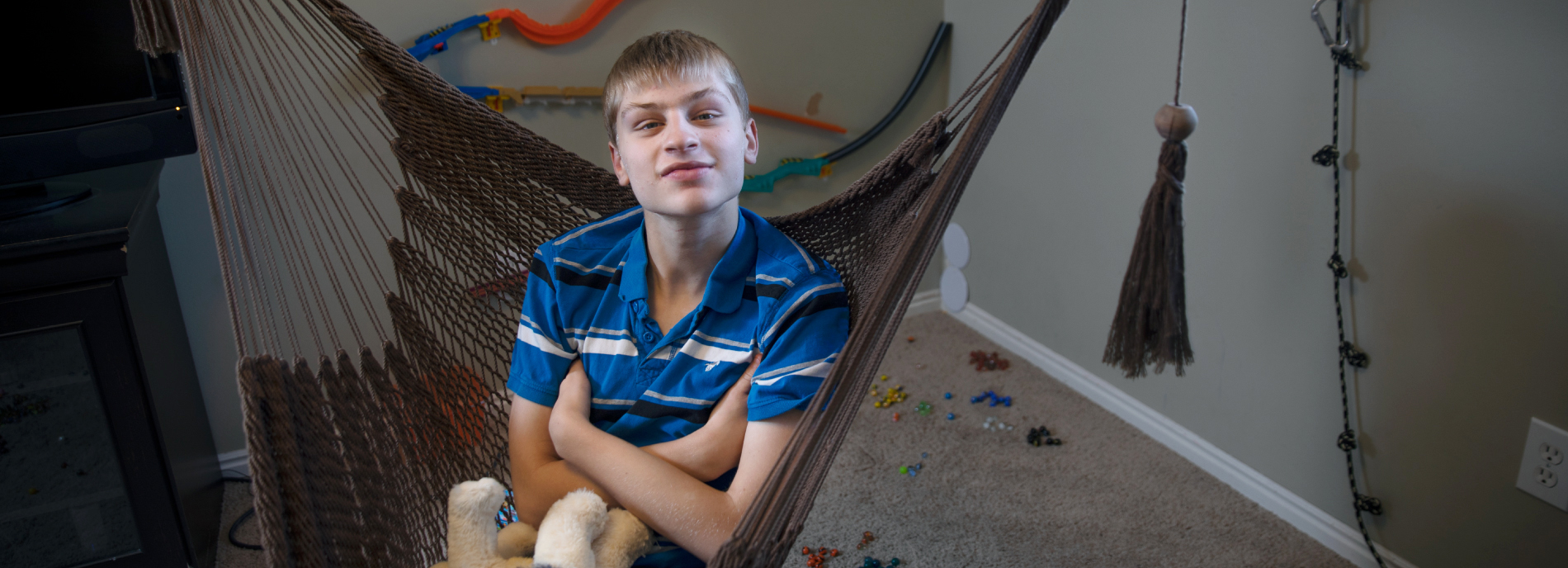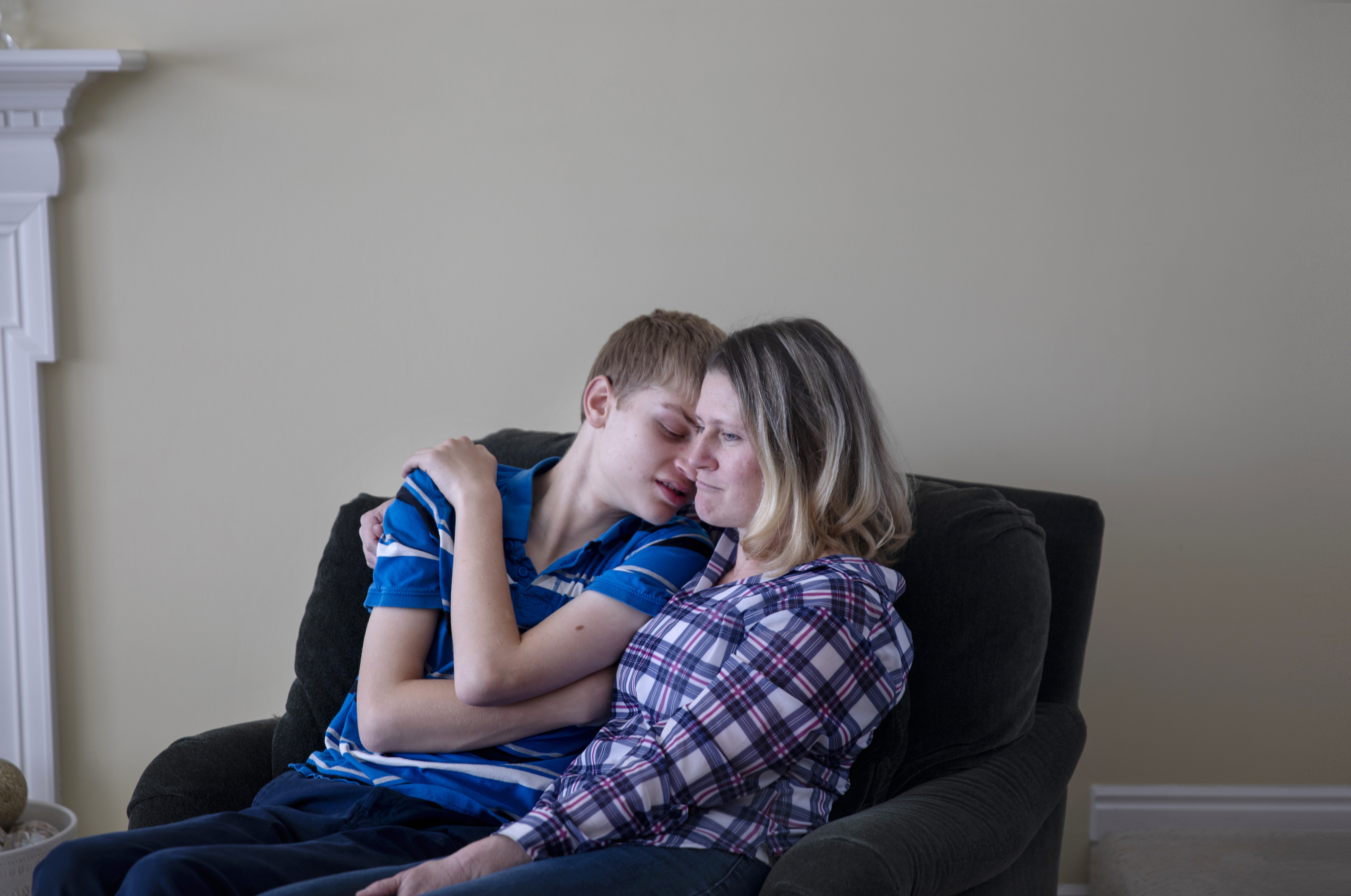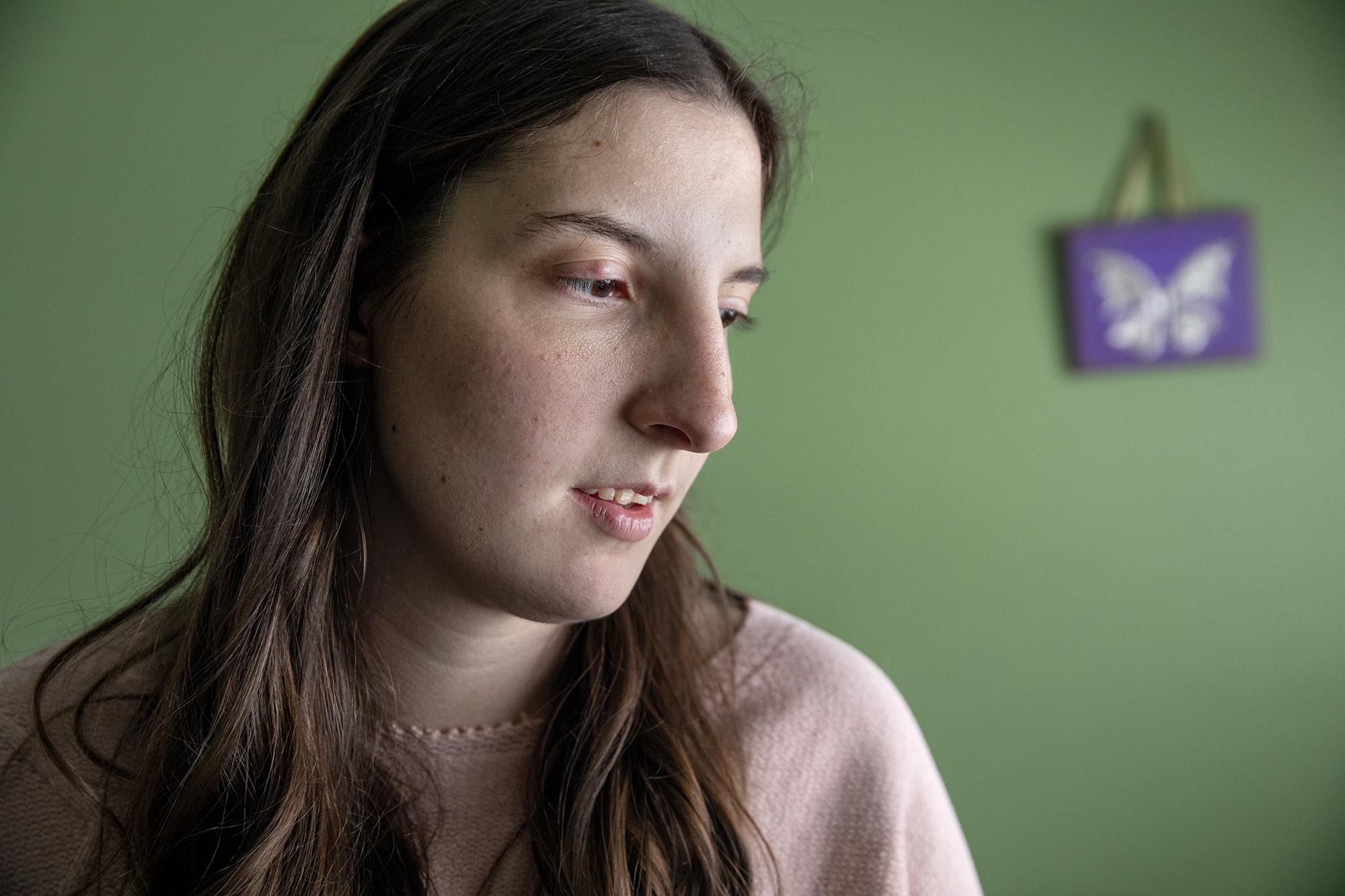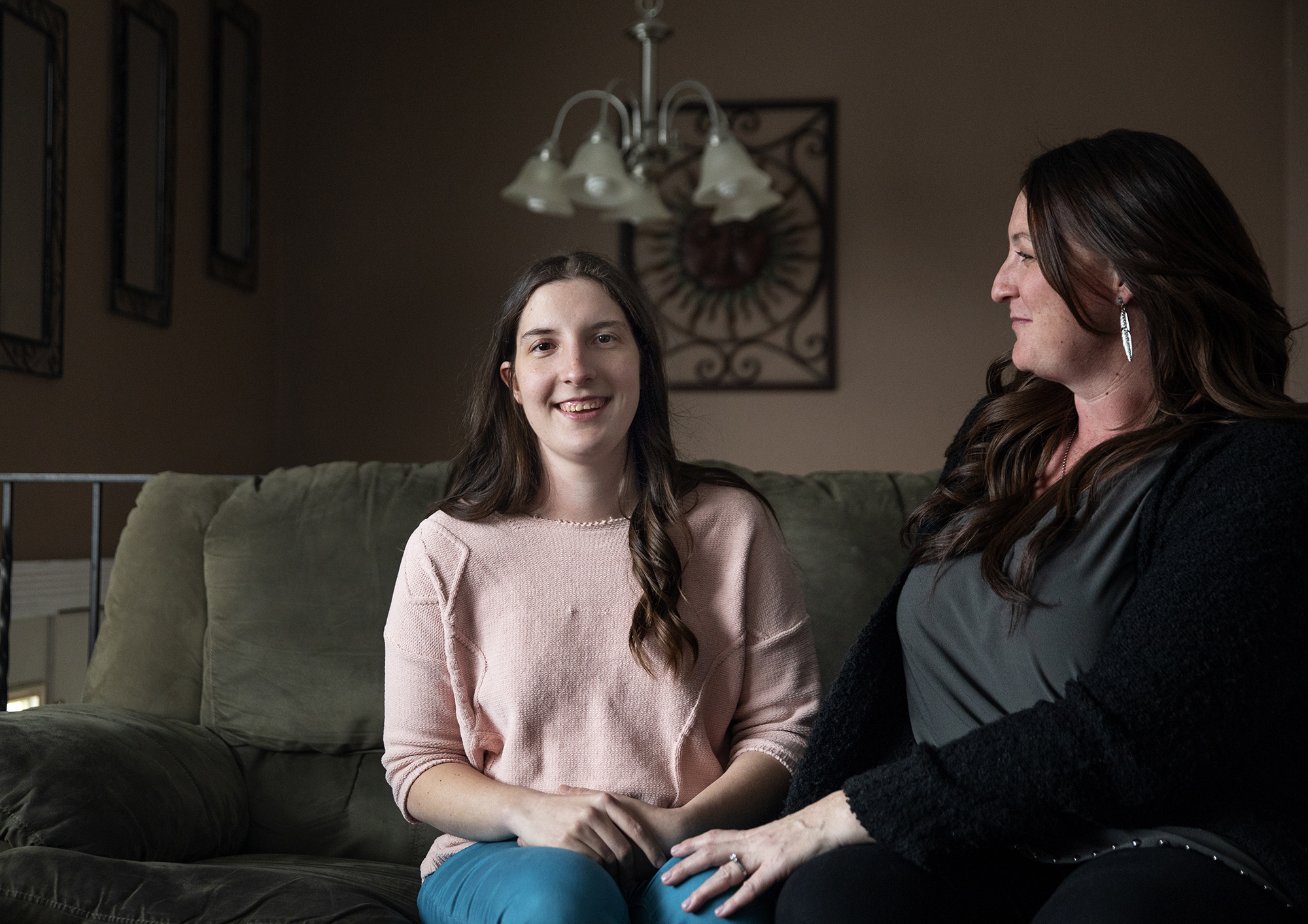
Why genetic tests matter for autistic people
Genetic tests for people with autism are far from routine and don’t always yield results, but the information they offer can change lives.
Editor’s Note
This story is the first in a three-part series on clinical genetics.
A
lmost as soon as James was born in April 2003, it was clear that he was not well. When he failed a newborn screening test and was struggling to breathe, he was sent straight from the delivery room to the neonatal intensive care unit. Doctors there suspected he had a genetic condition, but genetic testing, such as it was 15 years ago, yielded no answers. So nine days later, James’ mother, Angela, took him home. (We are withholding James and Angela’s last names to protect their privacy.)As an infant, James struggled to eat and never slept for more than 20 minutes at a time, but Angela attributed these things to his being a newborn and to the stress of their cross-country move. He didn’t sit unassisted at 1 year or crawl until he was 18 months old, but doctors and friends reassured her he was fine. When James was 14 months old, a physical therapist acquaintance took one look at the child and told Angela he clearly had some sort of developmental delay. But even the specialists she then took her son to see dismissed his loud squeals, hand-flapping and tendency to ignore others as consequences of his poor hearing. He was finally diagnosed with autism at age 4.
As James grew, other health concerns cropped up: He saw physical therapists, occupational therapists, feeding therapists, speech therapists, hematologists, neurologists, developmental pediatricians, psychologists, behavioral therapists, ear-nose-and-throat doctors and gastroenterologists. He had five surgeries for sinus problems. And his blood contained so few platelets — the cells that clot blood — that when he woke with a nosebleed, “it would look like somebody died in his bed,” his mother recalls.
Still, this particular constellation of issues did not match any known genetic condition, and without a diagnosis, James’ doctors had no treatments to offer. “Our life history with him had been very much that we know there’s something, but we don’t know what it means and so we kind of have to watch everything,” Angela says.

Big reveal: Genetic testing identified mutations that explain James’s autism and his blood condition.
That waiting and watching ended in August, when Angela finally got answers. A genetic test that had not been available when James was born revealed that he has a mutation in a gene called TAF1. The mutation probably accounts for James’ autism, intellectual disability and other problems.
The long-overdue answers have significantly changed James’ care. For example, a bone in his foot is developing a deformity, warping his arch and making it difficult to walk. His doctors had initially suggested surgery to correct it, but they changed their minds when the genetic results made it clear the problem was neurological and would recur. They instead referred James to a physical therapist.
Genetic tests are not intended to diagnose autism — no known mutation leads to the condition every time — but, as in James’ case, their results can substantially alter the course of treatments or prevention. Some mutations reveal that the carrier is prone to medical conditions such as seizures, obesity or kidney problems, for example. The information can also connect people who share a mutation; some of these individuals and their families have even fostered research by discovering shared traits. And knowing the specific risks associated with a mutation helps families make decisions about having more children.
Even so, most autistic people and their families never gain access to that information: In the United States, roughly one in three children with autism is offered genetic tests. (The numbers tested are higher in some countries, such as France and the United Kingdom, and lower in others, such as Austria and most resource-poor nations.)
As the cost of the tests drops, though, some specialized centers are beginning to offer them to anyone with an autism diagnosis. The knowledge gleaned as a result could influence care, not just of that individual, but of anyone who has that mutation, says David Ledbetter, chief scientific officer at Geisinger Health System in Danville, Pennsylvania. “I find it inappropriate to not at least have the information available.”

Long wait: Maia was 20 before a chromosomal microarray analysis revealed she has Phelan-McDermid syndrome.
Ignored recommendations:
F
or a family seeking a genetic test for their autistic child, there are a few options. The American Academy of Pediatrics and the American College of Medical Genetics and Genomics both recommend certain tests, including chromosomal microarray analysis, a technique that detects large duplications or deletions of DNA. If that does not yield a result — which happens 80 to 85 percent of the time — the guidelines advise clinicians to test for two syndromic forms of autism.However, most people never hear about these tests. Clinicians who care for autistic children are often unaware of the tests’ benefits or are reluctant to order them because of a lack of training. For example, one survey of 108 pediatricians in Utah found that 70 percent had never ordered genetic tests for autism or had done so only after a specialist recommended it. “When I was in residency, none of this stuff was taught to me,” says lead investigator Paul Carbone, a pediatrician at the University of Utah in Salt Lake City who oversees James’ care. “It’s a very much evolving, complex field that I think you need to really make an effort to stay up with.”
The tests’ cost is often an insurmountable barrier: Insurance companies in the U.S. don’t routinely reimburse for them because, they say, the results don’t change autism care. “[Reimbursement] is very variable depending on the policy they have, the company and how much time I can spend talking to a person who is reading a computer screen to me on the phone,” says Joseph Cubells, associate professor of human genetics and psychiatry at Emory University in Atlanta, Georgia. “It is very limited and frustrating.”
Routine microarray testing would have spared Calleen Kenney years of worry and guilt had it been available when her daughter Maia was born 20 years ago. When Maia was 2, doctors tested her for a few known conditions associated with autism, including fragile X and Angelman syndromes. Kenney interpreted the negative results as meaning that Maia’s condition was not genetic. Even when doctors noted that Maia has distinct facial features that signal a genetic condition, Kenney thought they were simply criticizing her daughter’s appearance. When Maia was diagnosed with autism about a year later, Kenney started questioning everything she had done, from vaccinating Maia to things she had eaten when she was pregnant.
It was only in October, when Maia finally had a chromosomal microarray analysis, that Kenney learned her daughter has a deletion of a genetic region called 22q13. The deletion leads to Phelan-McDermid syndrome, a condition Maia had never been tested for. The syndrome, often accompanied by autism, can affect the kidneys and eyes, and Kenney immediately thought of Maia’s ongoing problems with urination and her blocked tear ducts; she has since arranged to have Maia’s kidneys and eyes checked regularly.
Kenney also stopped blaming herself and trying to change her daughter. Maia has become more anxious over time and is terrified of doing anything on her own. Before the test, Kenney had tried to teach Maia to be more independent, which only made Maia more anxious and angry. But now, recognizing that Maia is the way she is because of biology, Kenney has hired extra caretakers to make sure Maia always has help.
“Instead of trying to change her behaviors, we’re modifying how we take care of her,” Kenney says. “It has given me a lot of relief knowing where her autism comes from, and that there was nothing I could have done differently.”
”“It’s a transformative personal experience for these people.” David Ledbetter
Gene by gene:
M
aia’s condition is one of only a few associated with autism that are caused by large chromosomal mutations. In many other cases, the mutation interferes with a single gene — and there might be hundreds of these genes, according to the latest estimate. But the gene panels many commercial labs use include few genes from this list, instead favoring those associated with known syndromes. One study last year found that the gene lists from 21 companies have only one gene in common; only 12 included CHD8, often cited as a top autism gene.“There are no clear criteria for assigning a gene to an autism list, [and] most of the companies do not provide a rationale for inclusion,” says co-lead researcher Ny Hoang, a genetic counselor at the Hospital for Sick Children in Toronto, Canada. Hoang and her colleagues are part of an international working group putting together a list of genes that have strong clinical ties to autism. They aim to make the list and a set of guidelines publicly available and to update both regularly.
Ultimately, genetic tests might involve sequencing people’s entire genomes: Preliminary work presented at a genetics conference in October suggests that would be the most efficient first-line method, as it would detect all the information from every type of genetic test. In the meantime, some sophisticated centers, including research labs, have access to tools that can sequence the exome — the collection of all the protein-coding segments in a genome. This method is expensive, and the long list of results it generates can make it challenging to identify the mutation responsible. But it can also reveal unexpected mutations.
Carbone had to request twice that James’ exome be sequenced — it took two years before the insurance company agreed. In July, a month before the results came in, 15-year-old James had surgery to reconstruct an opening to his sinuses. After the procedure, he was discharged and sent home. But then he started to bleed. He fainted because of the blood loss, and Angela held him upright, which triggered convulsions. When he woke up, terrified, James fought the paramedics as they tried to take him back to the hospital.
A month later, the exome sequence revealed that James has two key mutations: the one in TAF1, which explains his autism and developmental delay; and one in the gene GP9 that causes his low platelet count and led to the complications after surgery.
Beyond benefits for the individual, sequencing exomes may be the only way scientists can uncover the full list of mutations related to autism. With this goal in mind, John Constantino’s team offers exome sequencing to anyone who visits their autism clinic at Washington University in St. Louis, Missouri. The team tests each individual with a microarray first and then makes the case for exome sequencing to qualify for insurance reimbursement. They partner with a commercial lab that negotiates the reimbursements and use a private grant to absorb anything the insurance doesn’t cover. “It’s one of these ridiculous tragedies of a non-systematic health system that we’re even dealing with this; it’s like bartering or something,” Constantino says.
Constantino and his collaborators have identified genetic variants that predispose autistic people to subtypes of epilepsy that respond to specific drugs. The results have also altered treatment for some autistic people based on case reports of others with the same mutation. And in one case, the team found a mutation linked to autism in an undiagnosed child. The child had shown aggressive behaviors in public and had been taken from his parents by Child Protective Services; he was united with his family after his diagnosis.
Ledbetter’s group at Geisinger also offers genetic tests to every individual with autism or developmental delay. They were able to convince their partnered insurance company that exome sequencing should be the first-line test because it can detect the large mutations normally only identified by microarrays.
Both these groups maintain independent lists of mutations and their linked clinical effects. The average clinician, however, may not be aware of these resources or know how to apply them.
There are some databases available to any clinician who needs to look up the significance of a particular mutation. ClinVar and ClinGen, funded by the National Institutes of Health, list genes and specific variants found in individuals with known conditions. ClinGen, for instance, lists 40 genes with a ‘definitive’ link to autism. Professional organizations advise clinicians to search both ClinVar and ClinGen, as well as large databases of controls. They also recommend assessing whether the mutation is likely to disrupt the related protein. The upshot is an overall score of ‘pathogenic,’ ‘likely pathogenic,’ ‘uncertain significance,’ ‘likely benign’ or ‘benign.’

New approach: Since finding out about Phelan-McDermid, Calleen Kenney has Maia’s eyes and kidneys checked regularly.
This classification system is an attempt to standardize how labs link genes and variants to a condition, says Christa Lese Martin, director of the Autism and Developmental Medicine Institute at Geisinger. Many labs routinely reanalyze all the sequences in their database yearly to look for previously unknown links. Geisinger also maintains a gene ‘watch list’: In the past year, for example, they upgraded the gene DLG4 from ‘uncertain’ to ‘pathogenic,’ Martin says. “We’ve learned a lot by having more data.”
Geisinger staff are offering exome sequencing to anyone who visits their health clinic and have tested more than 100,000 people so far. From an initial group of 60,000 people, they identified 35 who have a deletion in a chromosomal segment called 16p11.2, which is linked to both autism and obesity. All 35 are overweight or obese, but early information about the mutation might have prevented this outcome.
For many autistic people and their families, the information also offers powerful relief from a lifetime of uncertainty.
“It’s a transformative personal experience for these people who had learning problems, struggled in school and never understood why; their parents and teachers thought they were lazy and weren’t trying hard; [or] their parents and teachers didn’t believe they had anxiety disorder; [or] they had what they thought were unrelated physical medical problems,” Ledbetter says. “We think it would be far better for people to find that out in early childhood.”
Since James received the appropriate treatment for his bleeding condition, he has not had a single nosebleed. Had his doctors known about his condition sooner, they might have spared James the trauma of being rushed back to the hospital in an ambulance after his sinus surgery. James used to smile and point excitedly when he saw ambulances and fire trucks, but he now yells out, “No ambulance!” and “No firetruck!” Getting him to the hospital even for routine appointments has become a challenge.
For Angela, the genetic results ended years of waiting. Some of what she has learned about the effects of the TAF1 mutation has been sobering, she says, but at least she finally knows the root of James’ conditions and can plan for the future. “There’s grief, [but] there’s finally acceptance,” she says. “I’m thankful that I know.”
Syndication
This article was republished in Scientific American.
Recommended reading

New organoid atlas unveils four neurodevelopmental signatures
Explore more from The Transmitter
Snoozing dragons stir up ancient evidence of sleep’s dual nature

The Transmitter’s most-read neuroscience book excerpts of 2025


